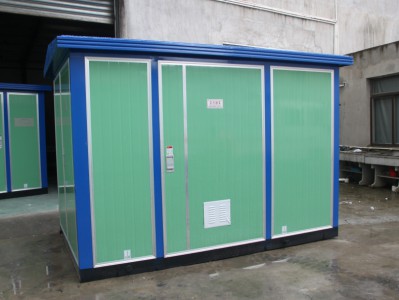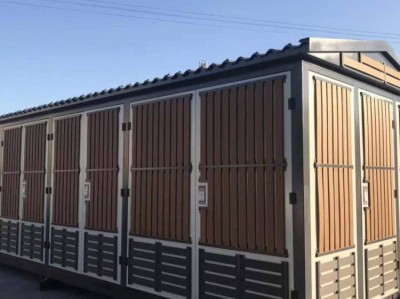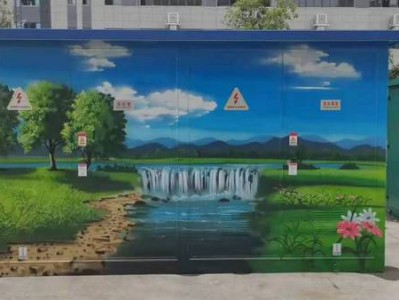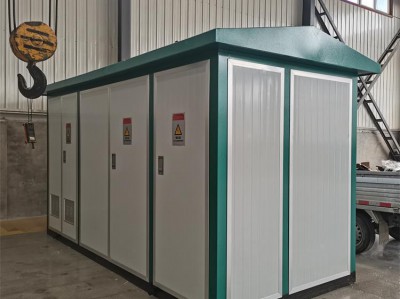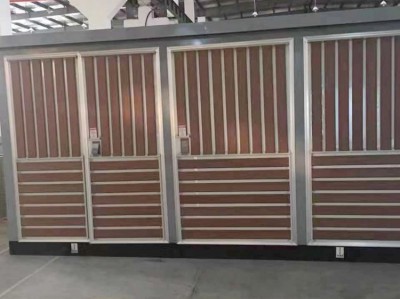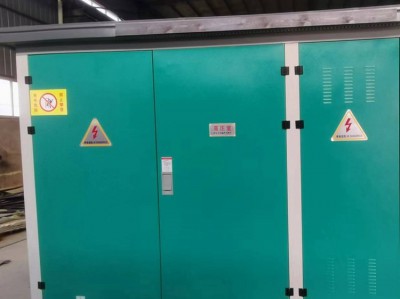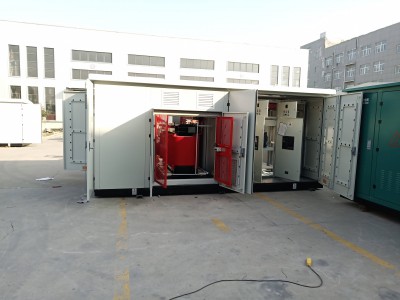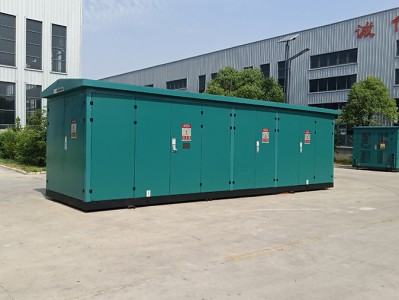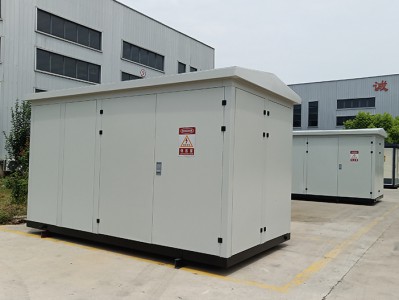compact substations made in China
Product description
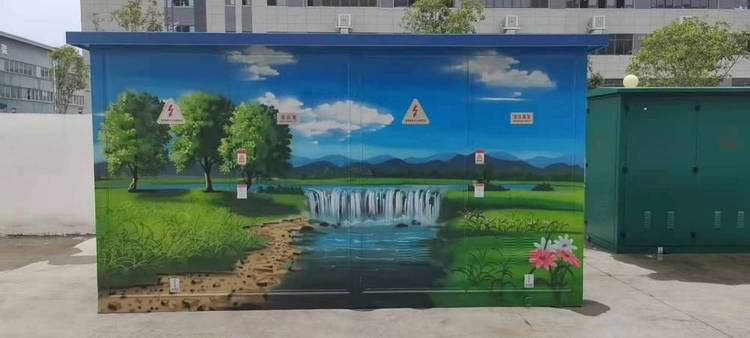 The following is a detailed introduction to compact substations made in China:
The following is a detailed introduction to compact substations made in China:
I. Structural Features
1. **Compact layout design**
- Domestic compact substations adopt a highly integrated design concept, compactly arranging various functional units of the substation, such as transformers, switchgear (including high-voltage switchgear and low-voltage switchgear), and reactive power compensation devices. Compared with traditional substations, it greatly reduces the land occupation. For example, in areas with scarce land resources such as city centers, this compact layout can effectively save space and reduce land costs.
- The connections between various devices adopt a compact electrical connection method, reducing the length of cable usage and reducing line losses. At the same time, this compact layout is also conducive to improving the overall operating efficiency of the substation, because the electrical distance between devices is shortened, and the mutual influence relationships such as electromagnetic coupling are easier to control.
2. **Equipment miniaturization and integration**
- Many devices have achieved miniaturization on the premise of meeting functional requirements. For example, a new type of miniaturized transformer is adopted. Its iron core and winding structure are optimized, reducing the volume while ensuring the voltage transformation function. Switchgear also adopts a miniaturized design. By optimizing the internal structure and using high-performance insulating materials, the cabinet size is reduced while ensuring electrical performance.
- The degree of equipment integration is high, and some functional modules are integrated into a single device. For example, integrating functions such as protection, measurement, and control into switchgear realizes multi-functions in one cabinet, reduces the number of devices, and simplifies the overall structure of the substation.
3. **Prefabricated and modular structure**
- Domestic compact substations widely adopt prefabricated structures. Many components are prefabricated in the factory and then transported to the site for assembly. This method not only shortens the construction period of the substation but also improves the controllability of construction quality. For example, prefabricated cable trays, foundation modules, etc. can undergo strict quality inspections in the factory. After arriving at the site, they only need to be spliced and installed according to the predetermined scheme.
- The substation as a whole presents a modular structure. Each module has relatively independent functions and can cooperate with each other. If a certain module fails, it can be replaced or repaired relatively easily without causing a long-term interruption to the operation of the entire substation.
II. Technical Parameters
1. **Rated voltage**
- The rated voltage on the high-voltage side covers common voltage levels of distribution networks such as 10kV and 35kV to meet different power transmission and distribution needs. The rated voltage on the low-voltage side is generally 0.4kV, mainly to meet the power consumption requirements of terminal users such as civilians, commerce, and small industries.
2. **Rated capacity**
- The rated capacity range is wide, ranging from several hundred kVA (such as 315kVA) to several thousand kVA (such as 2000kVA). The specific rated capacity is selected according to the power consumption load of the actual application scenario. Small communities or commercial outlets may choose compact substations with smaller capacities, while large industrial areas or commercial districts may need larger-capacity equipment.
3. **Connection group label**
- Common connection group labels include Dyn11, etc. The Dyn11 connection group label has better performance under asymmetric loads, can effectively suppress third harmonics, improve power quality, and is suitable for places with large load changes and certain requirements for power quality.
4. **Short-circuit impedance**
- The short-circuit impedance is generally about 4% - 6%. A reasonable short-circuit impedance value can limit the size of short-circuit current when a short-circuit fault occurs, protecting the equipment in the substation (including transformers, switchgear, etc.) from being impacted by excessive short-circuit current. At the same time, during normal operation, it helps the good matching between the substation and the power grid and load, ensuring the stable transmission and distribution of electric energy.
III. Environmental Requirements for Use
1. **Temperature range**
- Generally, it is required to work normally at an ambient temperature of -25℃ - +40℃. In a low-temperature environment, the starting performance of the equipment needs to be considered. Especially for oil-immersed equipment (if any), factors such as the fluidity of the oil need to be paid attention to. In a high-temperature environment, it is necessary to ensure that the heat dissipation system of the equipment can work effectively to prevent the equipment from affecting performance or malfunctioning due to overheating.
2. **Humidity requirements**
- The relative humidity is generally required not to exceed 90% (monthly average) and 95% (daily average). A high-humidity environment may affect the insulation performance of the equipment. In areas with high humidity (such as coastal areas or areas in the rainy season in the south), moisture-proof measures need to be taken, such as strengthening the sealing of the equipment, using moisture-proof materials, or setting up dehumidification equipment in the substation.
3. **Altitude limit**
- Generally, the altitude does not exceed 1000m. When the altitude exceeds this value, due to factors such as reduced atmospheric pressure and thin air, the insulation performance and heat dissipation performance of the equipment will be affected. When used in high-altitude areas, special design or adjustment of the equipment may be required, such as increasing the insulation distance and strengthening heat dissipation measures.
4. **Adaptation to pollution level**
- According to different usage areas, different pollution levels need to be adapted. In areas with a high pollution level (such as areas with serious industrial pollution or more dust), the external insulation surface of the equipment is prone to accumulate dirt and reduce insulation performance. To deal with this situation, measures such as increasing the creepage distance, using anti-pollution insulators or performing regular cleaning and maintenance can be taken to ensure the normal operation of the equipment.
IV. Application Scenarios
1. **Urban central areas**
- In urban central areas, land resources are expensive and space is limited. Domestic compact substations can meet the power supply needs of urban central areas and provide reliable power conversion and distribution services for large buildings such as commercial buildings, office buildings, and shopping centers. Its compact structure can adapt to the narrow construction space in the city center and reduce the impact on the surrounding environment.
2. **Emerging industrial parks**
- There are many enterprises in emerging industrial parks, and the power consumption needs are diverse and growing rapidly. Compact substations can be quickly constructed and put into use to meet the power consumption needs of different enterprises in the industrial park (including small start-up enterprises and large manufacturing enterprises). Its modular structure is convenient for capacity expansion or function upgrade according to the development of enterprises and changes in power consumption loads.
3. **Mixed areas of residential communities and commercial districts**
- In areas where residential communities and commercial districts are mixed, domestic compact substations can take into account the power consumption needs of two different types of users. Provide stable low-voltage power for residential users to ensure the normal operation of residents' living electrical equipment (such as lighting, home appliances, etc.); at the same time, provide sufficient power support for commercial users (such as stores, restaurants, entertainment venues, etc.) to ensure the normal conduct of commercial activities.
4. **Temporary power consumption projects**
- For some temporary power consumption projects, such as large construction sites and temporary large-scale event venues (such as the construction of international sports event venues and large music festival venues), the prefabricated and quick-installation characteristics of domestic compact substations can give full play to their advantages. It can be quickly assembled and put into use, and can be easily dismantled or reused after the project is completed.

